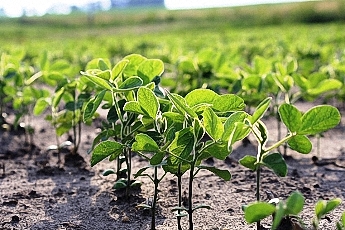Soybean maturity groups and growth habits in Esfahan conditions
Keywords:
Growth habit, Maturity group, Soybean, Yield, Yield componentsAbstract
Knowledge of the vegetative and reproductive characteristics of soybean cultivars with different growth habits and maturity groups is essential for the selection of a suitable variety as well as for providing conditions for their growth. In 2008 at a field located in Kholenjan of Esfahan, Iran, nine indeterminate type cultivars of different maturity groups, namely Williams, Wood Worth, Hack, Zane, Black Hawk, Bonus, Steel, S.R.F. and Harcor and one determinate cultivar belonging to maturity group III namely Hobbit, in a complete randomized block design with four replications were evaluated. Indeterminate cultivars and higher maturity group cultivar produced more dry matter. Generally indeterminate cultivars with later maturity had longer main stem and more node, pods and seeds. The determinate cultivar had more lateral branches, and more pods and seed per pod. However, these traits did not show any trend in different maturity groups. Height of the first pod from the ground surface in indeterminate cultivars was higher than of indeterminate ones. Number of pods per main stem nodes, number of seeds per pod in the lateral stems and number of nodes per lateral branches show no significant difference among cultivars. Classification of cultivars based on the above characteristics showed that cultivars with different growth habit had basic differences and some cultivars showed some similarity to maturity groups which did not exist in the present study.
References
Beaver, J.S., Johnson, R.R., 1981. Response of determinate and indeterminate soybean to varying cultural practices. Agron. J., 73, 883-838.
Fehr, W.R., Caviness, C.E., 1980. Stage of soybean development. Iowa Agr. Exp. Sta., 80.
Foley, T.C., Orf, J.H., Lambert, J.W., 1986. Performance of related determinate and indeterminate soybean lines. Crop. Sci., 26, 5-9.
Latifi, N., 1393. Soybean cultivation. Jehadeh Daneshgahii Mashhad, 282.
Mayers, D.J., Lawn, R.J., Byth, D.E., 1981. Adaptation of soybean [Glycine max (L.) Merrill] to the dry season of the tropics. I. Genotype and environment effect of phenology. Aust. J. Agr. Res., 42, 497-515.
Mayers, D.J., Lawn, R.J., Byth, D.E., 1991. Adaptation of soybean [Glycine max (L.) Merrill] to the dry season of the tropics. II. Effect of genotype and environment on biomass and seed yield. Aust. J. Agr. Res., 42, 517-530.
Mayers, D.J., Lawn, R.J., Byth, D.E., 1991. Agronomic studies on soybean [Glycine max (L.) Merrill] in the dry seasons of tropics. III. Limits to yield imposed by phenology. Aust. J. Agr. Res., 42, 1075-1092.
Ouattara, S., Weaver, D.B., 1994. Effects of growth habit on yield and agronomic characteristics of late planted soybean. Crop. Sci., 34, 870-873.
Poehlman, J.M., 1986. Breeding Field Crops. Van Nor strand Reinhold. New York, 724.
Shahrokh, V., Ayoubi, SH., Jalalian, A., 2011. Qualitative, quantitative and economical land suitability evaluation for wheat and rice production and assessment of their environmental impacts in Zarrinshahr and Mobarakeh Isfahan Province. Iran. J. Water. Soil. Conservat., 18(3).
Shahsavari, M.R., Khajehpour, M.R., Rezai, A., 1992. Yield component in common bean (Phaseolus vulgaris L.). Iran. J. Agr. Sci., 24(1), 53-63.
Shahsavari, M.R., Rezai, A., Khajehpour, M.R., 1991. Effect of planting date on yield and its components of common bean (Phaseolus vulgaris L.). Agr. Sci. Tech. J., 5(1), 70-80.
Shahsavari, M.R., Shresmaiily, G., 1997. Correlation analysis of different traits in nine soybean (Glycine max (L.) Merr.) varieties by path method. Seed. Plant., 13(3), 1-9.

Published
How to Cite
Issue
Section
Copyright (c) 2020 Mohammad Reza Shahsavari, Golam Hossien Shirsmaeili, Moslehedin Rezaei

This work is licensed under a Creative Commons Attribution-NonCommercial-NoDerivatives 4.0 International License.



